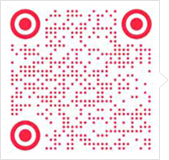
http://www.hteacher.net 2019-12-06 13:19 中国教师资格网 [您的教师考试网]
1. The relationship between "furniture" and "desk" is__________.
A. hyponymy B. antonymy C. synonymy D. homonymy
2. X: He likes dogs. Y: He likes animals.
The relationship of X and Y is that“__________”.
A. X is synonymous with Y B. X is inconsistent with Y
C. X entails Y D. X presupposes Y
3. Nouns, verbs and adjectives can be classified as __________.
A. lexical words B. grammatical words C. function words D. form words
4. Which of the following groups are complementary antonyms?
A. good—bad B. buy—sell
C. above—below D. alive—dead
5. From the prospective of traditional approach of syntax, noun has the categories of number, gender and__________.
A. aspect B. case C. tense D. voice
6. Which of the following is NOT a compound word?
A. Landlady. B. Greenhouse. C. Uplift. D. Unacceptable.
7. The study of how sounds are put together and used to convey meaning in communication is__________.
A. morphology B. general linguistics
C. phonology D. semantics
8. In terms of place of articulation, the two consonants [f], [v] are __________.
A. dental B. alveolar C. palatal D. labiodental
9. __________ is the act performed by or resulting from saying something; it is the consequence of, or the change brought about by the utterance.
A. A locutionary act B. An illocutionary act
C. A perlocutionary act D. A performative act
10. In terms of manner of articulation, the sounds [p], [b], [t], [d], [k], [g] are__________.
A. affricates B. fricatives C. bilabial D. stops
答案解析
1.A【解析】考查语义学中的涵义关系。“hyponymy”指“上下义关系”,“antonymy”指“反义关系”,synonymy指“同义关系”,“homonymy”指“同音/形异义”。“家具”和“桌子”的关系属于上下义关系。furniture是desk的上义词(superordinate),desk是furniture的下义词(hyponym)。故选A。
2.C。【解析】考查语句之间的涵义关系。A项表示“同义关系”,B项表示“矛盾关系”,C项表示“蕴涵关系”,D项表示“预设关系”。分析题干可知,他喜欢狗,那么他一定喜欢动物;他喜欢动物,但不一定喜欢狗。因此,由X能推出Y.但是由Y推不出X,X包含Y。故选C。
3. A【解析】A lexical item (or lexical unit, lexical entry) is a single word, a part of a word, or a chain of words (=catena) that forms the basic elements of a language's lexicon (≈vocabulary), including nouns, verbs, adjectives, and most adverbs。故选A。
4.D【解析】 考查语义学中的涵义关系。人们一般认为词语之间有三种含义关系:相同关系、对立关系和内包关系。其中,反义关系有按个主要次类:等级反义关系(gradable antonym)、互补反义关系(complementary antonym)和反向反义关系(converse antonym)。good--bad互为等级反义关系,buy—sell和above—below互为反向反义关系,boy—girl互为互补反义关系。故选D。
5.B【解析】 考查句法学中的范畴。数(number)、性(gender)、格(case)是用来分析名词的范畴,时(tense)、态(voice)、体(aspect):,是用来分析动词的范畴。故选B。
6.D【解析】 考查形态学知识。复合词通常是由两个或两个以上的单词合写在一起构成,派生词是通过在词根上加后缀或前缀来构成的新词。A、B、C都是复合词,D项是由词根accept加上前缀un.和后缀一able构成的派生词。故选D。
7.C【解析】 考查语言学中的基本概念。形态学(morphology)主要研究单词的内部构造;普通语言学(general linguistics)是研究人类语言的普遍规则的;音系学(phonology)指从功能的角度出发对出现在某种特定语言中的语音及其组合、分布规律进行研究的语言学分支;语义学(semantics)指对语言产生意义的方法的系统研究.主要研究词义和句义。故选C。
8.D【解析】 考查辅音的分类。根据发音部位不同,英语的辅音可以分为:双唇音(bilabial)、唇齿音(labiodental)、齿音(dental)、齿龈音(alveolar)、后齿龈音(postal veolar)、硬腭音(palatal)、软腭音(velar)、声门音(glottal)。[f],[v]是上齿咬下唇的唇齿音。故选D。
9.C【解析】Illocutionary act: the act of expressing the speaker’s intention. It is the act preformed in saying something.(言外行为是通过发出这样一个话语,说话者表达他说话意图); Perlocutionary act: the act performed by or resulting from saying something. It is the consequence of, or the change brought about by the utterance.(言后行为是指话语带来的后果); Locutionary act: the act of uttering words, phrases, clauses. It is the act of conveying literal meaning by means of syntax, lexicon and phonology.(言内行为就是发出词的动作,它通过句法、词汇和音位学的方式来传达字面意义的行为)。故选C。
10.D【解析】 考查辅音的分类。根据发音方式不同,英语的辅音可以分为:塞音(stop)、鼻音(nasal)、擦音(fricative)、近似音(approximant)、边音(lateral)、塞擦音(affricate)等。[p],[b],[t],[d],[k],[g]属于气息非常强烈的通过口腔的爆破音,也称作塞音。故选D。
文章来源:中国教师资格考试网
责任编辑:张欣
上一篇: 资格证笔试英语语言学必做10题
下一篇: 教师资格《中学教育知识》模拟试题(4)
公众号

视频号

小红书

小程序

APP

京ICP备16044424号-2京公网安备 11010802023064号 Copyright © 2001-2024 hteacher.net 北京中师华图文化发展有限公司 版权所有